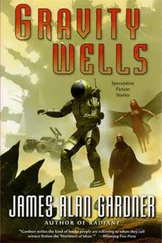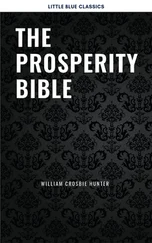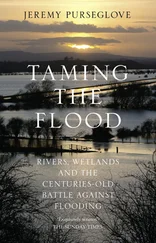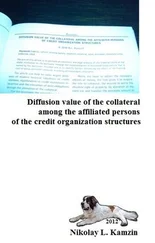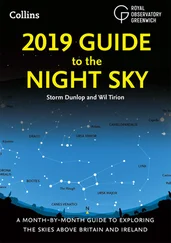Pickering, M. J., & Ferreira, V. S. 2008. Structural priming: A critical review. Psychological Bulletin, 134, 427–459.
Pickering, M. J., & van Gompel, R. P. G. 2006. Syntactic parsing. In M. Traxler & M. A. Gernsbacher (eds.), Handbook of psycholinguistics (2nd ed.). Amsterdam: Elsevier.
Pinker, S. 1994. The language instinct. New York: HarperCollins.
Pinker, S. 1997. How the mind works. New York: Norton.
Pinker, S. 1999. Words and rules: The ingredients of language . New York: HarperCollins.
Pinker, S. (ed.). 2004. The best American science and nature writing 2004 . Boston: Houghton Mifflin.
Pinker, S. 2007. The stuff of thought: Language as a window into human nature . New York: Viking.
Pinker, S. 2011. The better angels of our nature: Why violence has declined . New York: Viking.
Pinker, S. 2013. George A. Miller (1920–2012). American Psychologist, 68 , 467–468.
Pinker, S., & Birdsong, D. 1979. Speakers’ sensitivity to rules of frozen word order. Journal of Verbal Learning and Verbal Behavior, 18, 497–508.
Poole, D. A., Nelson, L. D., McIntyre, M. M., VanBergen, N. T., Scharphorn, J. R., & Kastely, S. M. 2011. The writing styles of admired psychologists. Unpublished manuscript, Dept. of Psychology, Central Michigan University.
Pullum, G. K. 1984. Punctuation and human freedom. Natural Language and Linguistic Theory, 2, 419–425.
Pullum, G. K. 2009. 50 years of stupid grammar advice. Chronicle of Higher Education, Dec. 22.
Pullum, G. K. 2010. The land of the free and “The Elements of Style.” English Today, 26, 34–44.
Pullum, G. K. 2013. Elimination of the fittest. Chronicle of Higher Education, April 11.
Rayner, K., & Pollatsek, A. 1989. The psychology of reading . Englewood Cliffs, N.J.: Prentice Hall.
Ross, L., Greene, D., & House, P. 1977. The “false consensus effect”: An egocentric bias in social perception and attribution processes. Journal of Experimental Social Psychology, 13, 279–301.
Sadoski, M. 1998. Mental imagery in reading: A sampler of some significant studies. Reading Online . www.readingonline.org/researchSadoski.html.
Sadoski, M., Goetz, E. T., & Fritz, J. B. 1993. Impact of concreteness on comprehensibility, interest, and memory for text: Implications for dual coding theory and text design. Journal of Educational Psychology, 85, 291–304.
Sanforth, A. J., & Filik, R. 2007. “They” as a gender-unspecified singular pronoun: Eye tracking reveals a processing cost. Quarterly Journal of Experimental Psychology, 60, 171–178.
Schacter, D. L. 2001. The seven sins of memory: How the mind forgets and remembers . Boston: Houghton Mifflin.
Schriver, K. A. 2012. What we know about expertise in professional communication. In V. Berninger (ed.), Past, present, and future contributions of cognitive writing research to cognitive psychology . New York: Psychology Press.
Shepard, R. N. 1978. The mental image. American Psychologist, 33, 125–137.
Siegal, A. M., & Connolly, W. G. 1999. The New York Times Manual of Style and Usage . New York: Three Rivers Press.
Skinner, D. 2012. The story of ain’t: America, its language, and the most controversial dictionary ever published . New York: HarperCollins.
Smith, K. 2001. Junk English . New York: Blast Books.
Soukhanov, A. 1999. Encarta World English Dictionary . New York: St. Martin’s Press.
Spinoza, B. 1677/2000. Ethics (G. H. R. Parkinson, trans.). New York: Oxford University Press.
Strunk, W., & White, E. B. 1999. The Elements of Style (4th ed.). New York: Longman.
Sunstein, C. R. 2013. Simpler: The future of government . New York: Simon & Schuster.
Sword, H. 2012. Stylish academic writing. Cambridge, Mass.: Harvard University Press.
Thomas, F.-N., and Turner, M. 1994. Clear and simple as the truth: Writing classic prose . Princeton: Princeton University Press.
Thurlow, C. 2006. From statistical panic to moral panic: The metadiscursive construction and popular exaggeration of new media language in the print media. Journal of Computer-Mediated Communication, 11 .
Truss, L. 2003. Eats, shoots & leaves: The zero tolerance approach to punctuation . London: Profile Books.
Van Orden, G. C., Johnston, J. C., & Hale, B. L. 1988. Word identification in reading proceeds from spelling to sound to meaning. Journal of Experimental Psychology: Learning, Memory, and Cognition, 14, 371–386.
Wason, P. C. 1965. The contexts of plausible denial. Journal of Verbal Learning and Verbal Behavior, 4, 7–11.
Wegner, D., Schneider, D. J., Carter, S. R. I., & White, T. L. 1987. Paradoxical effects of thought suppression. Journal of Personality and Social Psychology, 53, 5–13.
Williams, J. M. 1981. The phenomenology of error. College Composition and Communication, 32, 152–168.
Williams, J. M. 1990. Style: Toward clarity and grace . Chicago: University of Chicago Press.
Wimmer, H., & Perner, J. 1983. Beliefs about beliefs: Representation and constraining function of wrong beliefs in young children’s understanding of deception. Cognition, 13, 103–128.
Wolf, F., & Gibson, E. 2003. Parsing: An overview. In L. Nadel (ed.), Encyclopedia of Cognitive Science . New York: Macmillan.
Wolf, F., & Gibson, E. 2006. Coherence in natural language: Data structures and applications . Cambridge, Mass.: MIT Press.
Zwicky, A. M., Salus, P. H., Binnick, R. I., & Vanek, A. L. (eds.). 1971/1992. Studies out in left field: Defamatory essays presented to James D. McCawley on the occasion of his 33rd or 34th birthday . Philadelphia: John Benjamins.
Glossary
active voice.The standard form of a clause, in which the actor or cause (if there is one) is the grammatical subject: A rabbit bit him (as opposed to the passive voice: He was bitten by a rabbit ).
adjective.The grammatical categoryof words that typically refer to a property or state: big, round, green, afraid, gratuitous, hesitant.
adjunct.A modifierwhich adds information about the time, place, manner, purpose, result, or other feature of the event or state: She opened the bottle with her teeth; He teased the starving wolves, which was foolish; Hank slept in the doghouse.
adverb.The grammatical categoryof words that modify verbs, adjectives, prepositions, and other adverbs: tenderly, cleverly, hopefully, very, almost.
affix.A prefix or suffix: enrich, restate, blacken, slipped, squirrels, cancellation, Dave’s.
agreement.Alterations of the form of a word to match some other word or phrase. In English a present-tense verb must agree with the person and number of the subject: I snicker; He snickers; They snicker.
AHD. The American Heritage Dictionary of the English Language.
anapest.A footwith a weak-weak-STRONG meter: Anna LEE should get a LIFE; badda-BING!; to the DOOR.
antecedent.The noun phrase that specifies what a pronoun refers to: Biff forgot his hat; Before Jan left, she sharpened her pencils.
article.A small category of words which mark the definiteness of a noun phrase, including the definite article the and the indefinite articles a, an, and some . The Cambridge Grammar subsumes articles in the larger category determinative, which also includes quantifiersand demonstratives like this and that.
Читать дальше


